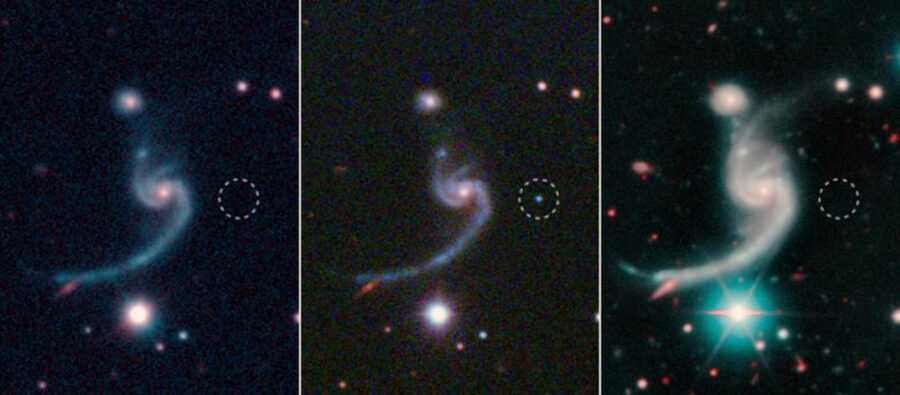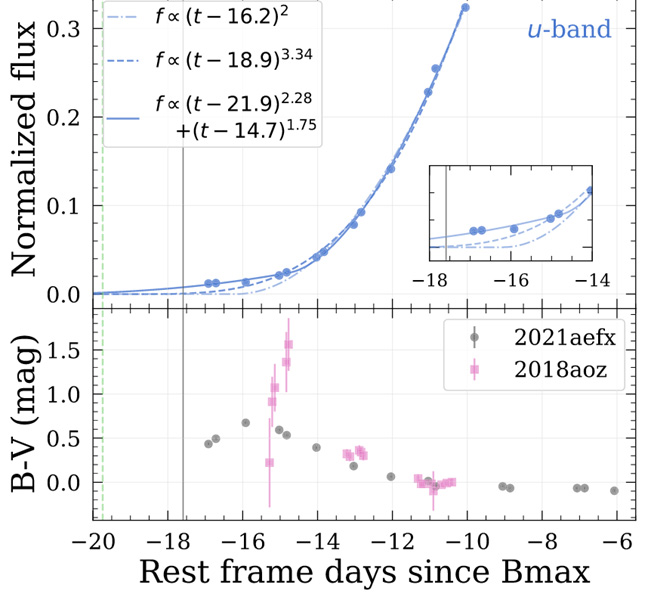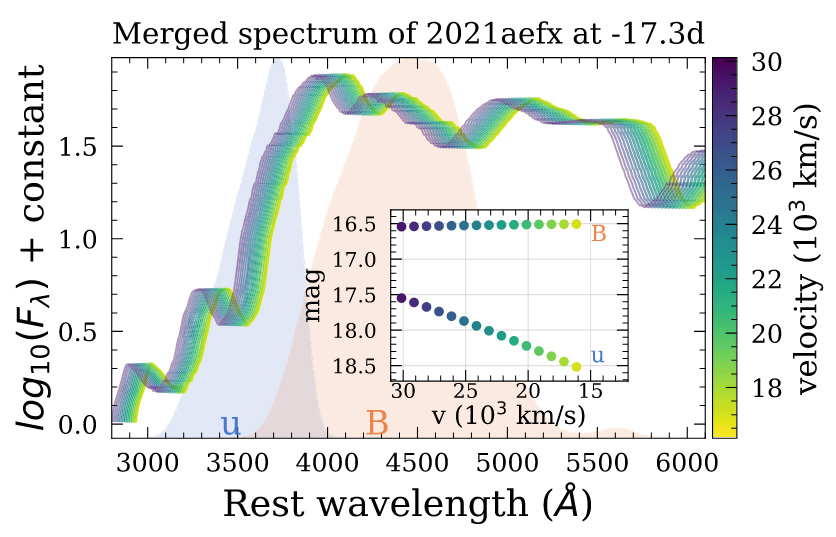Why did a supernova abruptly change color? A recent study suggests a change in ejecta velocity — a cosmic speed bump — might be the culprit.

SDSS / Caltech / Keck / CC BY 4.0
Why did a supernova observed back in 2021 initially emit so much ultraviolet light, then abruptly shift color? A recent study suggests a change in ejecta velocity, a cosmic speed bump, may be the culprit.
Brief Flashes
If you want to study the moments after a white dwarf explodes, speed is key. Each view of these violent ends, dubbed Type Ia supernovae, is temporary: we see a point of light grow brighter, then fainter over the course of months, and many of the interesting science questions can only be answered by catching the earliest moments after the eruption. This is an extremely difficult task considering that no one knows where a Type Ia supernova might go off, and consequently astronomers must scan the entire sky looking for tiny pinpricks of light that weren’t there before.
Although the adoption of automated telescopes in recent years has made this continuous needle-in-a-haystack search easier, it is still rare for astronomers to collect thorough measurements of a supernova many days before it reaches peak brightness. Recently, however, a team led by Chris Ashall (University of Hawaiʻi at Manoa) did just that, and what they found was somewhat surprising.
Too Blue

Adapted from Ashall et al. / Astrophysical Journal Letters 2022
Top: the u-band photometry of SN 2021aefx measured in days until peak brightness, along with several possible fits. Bottom: the color evolution of SN 2021aefx, which reverses direction about 16 days before maximum brightness. Another supernova that followed a similarly non-monotonic path, SN 2018aoz, is included for comparison. [Adapted from Ashall et al. 2022]The team’s target, named SN 2021aefx, initially emitted lots of ultraviolet light (u-band light, in observational astronomy parlance). However, in the first days after the explosion as the remnants grew brighter across all wavelengths, the growth of the u-band light didn’t follow the expected t2 power law. Instead, after its strong start, the ultraviolet emission stumbled: it still grew brighter, but followed a gentler two-component model with two different power indices. While the u-band emission faltered, all other wavelengths grew as expected, and this relative difference in growth rates changed color of the supernova soon after initial detection.
To figure out why this offbeat supernova generated so much ultraviolet light before changing its tune, the team collected spectra as well as multiband photometry. These data revealed that the supernova ejecta had a very high initial velocity of about 30,000 km/s 17 days before peak brightness, but that it slowed to 21,000 km/s less than two days later.
Slow It Down

Adapted from Ashall et al. / Astrophysical Journal Letters 2022
That speed change, combined with the difference in spectral shape across the u and B bands, was key to the authors’ explanation of the excess ultraviolet light. By artificially adjusting the velocity of their spectrum, Ashall and collaborators demonstrated that they could blueshift their way to a higher u-band measurement without affecting their B-band values. Putting it all together, the team claimed that the guts of this star hit a speed bump: when the ejecta were bolting out of the gate, more of their emitted light fell into the u band, but after abruptly slowing down, their emission tumbled back into the B band.
This study only focused on observations between 17 and 6 days before peak brightness, though the authors plan to publish fuller light curves they acquired. In the meantime, we’ll have to wonder about any other obstacles these supernova remnants might face on their journey through the universe.
Citation
“A Speed Bump: SN 2021aefx Shows that Doppler Shift Alone Can Explain Early Excess Blue Flux in Some Type Ia Supernovae,” C. Ashall et al 2022 ApJL 932 L2. doi:10.3847/2041-8213/ac738c
This post originally appeared on AAS Nova, which features research highlights from the journals of the American Astronomical Society.
 1
1









Comments
robin_astro
November 26, 2022 at 12:16 pm
Interestingly this paper includes two spectra taken by the amateur 2SPOT team using their remotely operated spectrograph in Chile
http://www.spectro-aras.com/forum/viewtopic.php?f=38&t=2848
Cheers
Robin
You must be logged in to post a comment.
You must be logged in to post a comment.